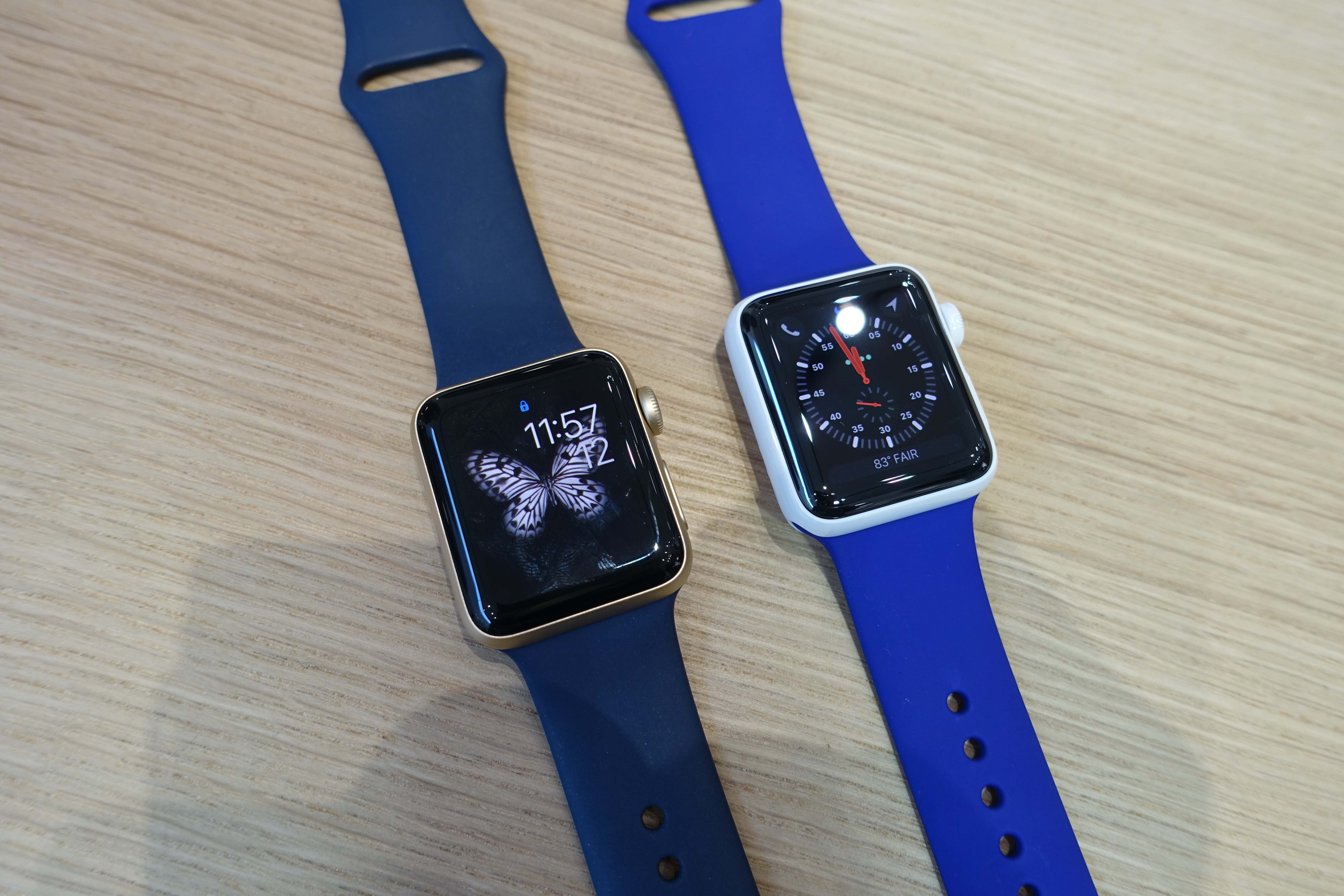Up close with the new LTE-enabled Apple Watch: does this really change everything?
/cdn.vox-cdn.com/uploads/chorus_image/image/56642159/apple_watch_series_3.0.jpeg)
Apple just announced a third version of the Apple Watch, the smartwatch it first launched in 2015. Since then, the Apple Watch has evolved into a product that’s really only great at a few things — notifications, fitness, and authentication like payments —and has still largely been an accessory to the iPhone.
But it’s possible that could change, now that Apple’s newest Watch has LTE built in. This means that wearers can truly be without their iPhones and still run all the supported apps on the device. In the photo below, you can see a new LTE icon in the control center on the watch.

Apple Watch the third’s form factor is the same as previous models. Truly: without staring at the Series 3 from the side, you can barely notice that it’s ever so slightly thicker than last year’s model (Apple says no more than “two sheets of paper” in a typically brilliant marketing statement). However, the LTE version does have a red digital crown to tell it apart.
The cellular connectivity comes via an electronic SIM card integrated right into the watch. And the watch’s display itself acts as its antenna for LTE and UMTS.

On the underside of the watch, the look and feel of the heart rate sensor module are essentially the same too. However, Apple has tweaked the sensor set and presumably its algorithms to provide new information around heart rate, specifically resting heart rate, recovery, and elevated heart rates — the last of which will only show up if you don’t appear to be physically active. (This alone is a little bit anxiety-inducing.)
The company also said it’s working with Stanford University to try to detect irregular heart beat patterns with the Apple Watch — something that Fitbit has also said it’s working on with its labs, as well as tracking sleep apnea.
But again, neither company is reinventing the wheel — er, optical sensors — here. They’re simply trying to process the data in a more intelligent way to make these wearables more useful to people. A lot of companies in the wearables space, not just Apple, have cited health and fitness functions as one of the main drivers for people to buy smartwatches. So it makes sense that Apple would try to double down on this.

Other than that, most of the Apple Watch updates people can expect to see are on the software side, such as voice responses from Siri and new watchOS 4, which rolls out more workout features to the watch. It also includes the GymKit platform that allows wearers to sync the watch with exercise equipments.
The big question is still what LTE will do to battery life. Apple says Apple Watches without LTE modems technically last 18 hours (although for many people that can translate into a day or day and a half, easily). And it claims the LTE version should fare just as well. But we won’t know for sure until we wear it for at least a few days, though.
And the even bigger question: will having a smartwatch with LTE really change things? Apple is not the first to make an LTE-equipped smartwatch; Samsung and LG have done it before. It will certainly be useful for very specific things — not having to carry a phone on a long hike and still having LTE for emergency situations, or streaming new music from the watch when you’re out and about and are tired of your locally stored stuff. And hey: Apple even showed a woman surfing while wearing a cellular-equipped Apple Watch.
But I’m also not convinced yet that this is a total game-changer — not yet. It’s still in a relationship with iPhone. It just happens to be a more powerful, capable, more independent gadget when iPhone is not around.
The new Apple Watch with LTE starts at $399 and will be available on September 22nd.


